GDR and FRG: deciphering abbreviation. Education and Combining FRG and GDR
1945-1948 became a thorough preparation that led to the split of Germany and the emergence on the European map of two countries formed instead of it - Germany and GDR. Deciphering the names of states is interesting in itself and serves as a good illustration of their various social vector.
Post-war Germany
After the end of World War II, Germany turned out to be divided between two occupation camps. The eastern part of this country occupied the troops of the Soviet Army, the western part was the occupied by the allies. The western sector gradually consolidated, the territories were divided into historical lands, which were led by local self-government bodies. In December 1946, it was decided to combine the British and American occupying zones - formed t. N. Bizony. It became possible to create a single control authority. So the Economic Council was created - the election body authorized to take economic and financial decisions.
Background split
First of all, these decisions dealt with the implementation of the Marshall Plan, a large-scale American financial project aimed at restoring the economies of European countries destroyed during the war. "Marshall Plan" contributed to the department of eastern occupation zone, since the USSR government did not accept the proposed assistance. In the future, the different vision of the allies and the USSR of the future Germany led to the split of the country and predetermined the formation of the FRG and the GDR.
FRG education
Western zones needed complete association and official state status. In 1948, consultations were held by the Western allies. The result of the meetings was the idea of \u200b\u200bcreating a Western German state. In the same year, the French occupation zone also joined the Bizoni - thus the so-called Tritonian was formed. In Western lands, a monetary reform was carried out with the introduction of its own monetary unit into circulation. Military governors of the United States proclaimed the principles and conditions for the creation of a new state, a special emphasis on its federalities. In May 1949, preparation and discussion of its constitution ended. The state received the name of the Federal Republic of Germany. Deciphering the name sounds like Germany. Thus, the proposals of the land bodies of self-government were also taken into account, and the republican principles of the country management were indicated.
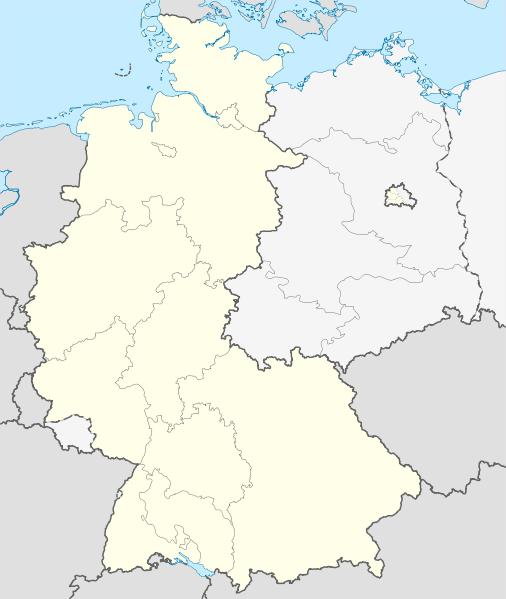
The geographically new country was located on 3/4 of the lands, which was occupied by the former Germany. Germany had its capital - the city of Bonn. Governments on the anti-Hitler coalition through their governors carried out control over the respect of the rights and norms of the constitutional system, controlled its foreign policy, had the right to intervene in all areas of economic and scientific activities of the state. Over time, the land status has been revised in favor of greater independence of FRG lands.
Education GDR
The process of creating a state was also in the eastern German lands occupied by the troops of the Soviet Union. The controlled body in the east was SWG - Soviet military administration. Under the control of SWGA, local governments were created - Lantagi. The commander-in-chief Swag, and in the essence - the host of East Germany, was appointed Marshal Zhukov. Elections to new authorities were carried out under the laws of the USSR, that is, at a class basis. A special order of February 25, 1947 was eliminated by Prussian state. Its territory was divided between new lands. Part of the territory has deployed the newly formed Kaliningrad region, all settlements of the former Prussia were Russified and renamed, and the territory was settled by Russian immigrants.
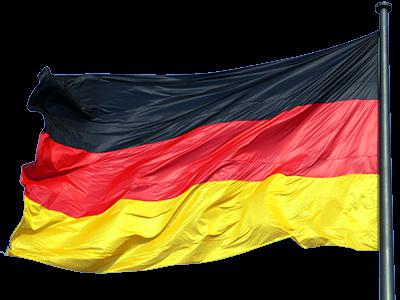
Officially Swag led military control over the territory of East Germany. Administrative governance was carried out by the Central Committee of the SEPG, which was fully controlled by the military administration. The first step was the nationalization of enterprises and lands, confiscation of property and its distribution in the socialist basis. In the process of redistribution, the administrative apparatus has developed, which has assumed the functions of state control. In December 1947, the German People's Congress was operating. In the theory, the Congress was to combine the interests of Western and Eastern Germans, but in fact on the Western lands his influence was insignificant. After the separation of Western land, NNK began to perform the functions of parliament exclusively in eastern territories. The second National Congress, formed in March 1948, held the main activities related to the emerging country prepared by the Constitution. The emission of the German brand was carried out by a special order - thus, five German lands located in the zone of the Soviet occupation were transferred to a single monetary unit. In May 1949, the Constitution of the Socialist was adopted and formed by the Interpartise Public and Political National Front. The preparation of Eastern lands to the formation of a new state was completed. On October 7, 1949, at a meeting of the German Supreme Council, it was announced that the creation of a new body of the Higher State Power, which was called the Temporary People's Chamber. In fact, this day can be considered the date of birth of a new state created in opposition to Germany. Deciphering the name of the new state in East Germany - the German Democratic Republic, the capital of the GDR became East Berlin. The status was stipulated separately. For many years, the ancient was divided into two parts by the Berlin Wall.
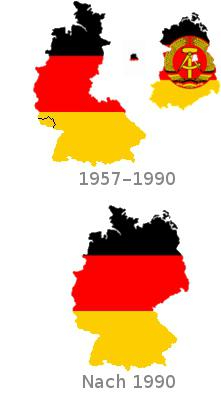
FRG development
The development of countries such as Germany and GDRs were carried out on different economic systems. The "Marshall Plan" and the effective economic policy of Ludwig Erhrade allowed to quickly raise the economy in West Germany. Great GDP growth was declared guest workers arriving from the Middle East, ensured the influx of cheap labor. In the 50s, the ruling CDC party adopted a number of important laws. Among them - the prohibition of the activities of the Communist Party, elimination of all the consequences of Nazi activities, a ban on some professions. In 1955, the Federal Republic of Germany joined NATO.
Development of GDR
The governments of the GDR, who were provided with the Office of German lands, ceased to exist in 1956, when it was decided to eliminate local authorities. Earth began to be called the district, the executive power began to represent the councils of the district. At the same time, the cult of the personality of advanced communist ideologues began to be stacked. The policy of metication and nationalization led to the fact that the recovery process of the post-war country was strongly delayed, especially against the background of the economic success of the Federal Republic of Germany.
Settlement of GDR relations, Germany
Deciphering the contradictions between two fragments of one state gradually normalized relations between countries. In 1973, the contract entered into force. He regulated the relationship between FRG and GDR. In November of the same year, FRG recognized the GDR as an independent state, the countries established diplomatic relations. The Constitution of the GDR introduced an idea of \u200b\u200bcreating a single German nation.
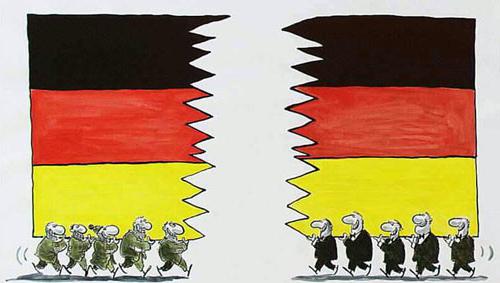
End of GDR
In 1989, the GDR occurs a powerful political movement "New Forum", which provoked a number of indignations and demonstrations in all major cities of East Germany. As a result of the resignation of the government, the Chairman of the SEPG became one of the activists of the new Nerma Giz. The mass rally, held on November 4, 1989 in Berlin, on which the requirements of the Freedom of speech, meetings and will proclaimed, was already agreed with the authorities. The answer was a law allowing citizens of the GDR intersection without valid reasons. This decision was caused by the long-yearly separated capital of Germany.
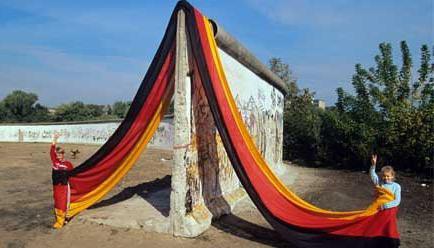
In 1990, a Christian-Democratic Union comes to power in the GDR, which immediately began to consult with the Government of the Federal Republic of Germany on the issue of the association of countries and the creation of a single state. On September 12, an agreement was signed between representatives of the former allies of the Anti-Hitler Coalition on the final settlement of the German issue.

The combination of FRG and the GDR would be impossible without the introduction of a single currency. An important step in this process was the recognition of the German FRG brand as a common currency throughout Germany. On August 23, 1990, the People's Chamber of the GDR made a decision on the accession of Eastern Lands to the FRG. After that, a number of transformations were implemented, eliminating socialist institutions of power and re-formated state bodies in the West German model. On October 3, the Army and the Fleet of the GDR were abolished, and instead of them, Bundesmarine and Bundeswehr were placed in the eastern territories - the Armed Forces of Germany. Decoding titles is based on the word "Bundes", which means "federal". The official recognition of Eastern lands in the FRG was enshrined by the adoption by the Constitutions of new subjects of state law.









